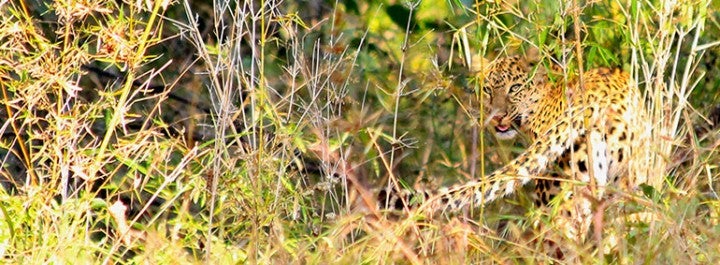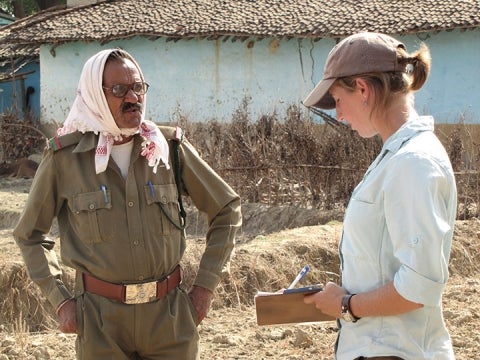Note: Yale School of the Environment (YSE) was formerly known as the Yale School of Forestry & Environmental Studies (F&ES). News articles and events posted prior to July 1, 2020 refer to the School's name at that time.

During a trip to India 10 years ago, Jennie Miller ’15 Ph.D. encountered a local phenomenon that still fascinates her today. In conversations with villagers near a tiger reserve, she kept hearing about wild cats attacking livestock and, sometimes, even human beings.
She wondered why the locals tolerated the attacks, how their livelihoods were impacted, and how the Indians’ relationship with nature differs from the American perspective on its own predator species — particularly wolves.
These questions were the foundation of Miller’s Ph.D. dissertation at Yale, in which she explored an emerging method of spatial mapping developed to reduce these livestock-carnivore conflicts.
Last week, her work earned Miller the third annual F. Herbert Bormann Prize, an award that honors an F&ES doctoral student whose work best exemplifies the legacy of the longtime professor.
>
She was recognized for a review of an emerging strategy known as spatial prediction risk modeling, in which scientists use data of past attacks to predict and map hotspots of livestock depredation. The paper, “Mapping attack hotspots to mitigate human-carnivore conflict,” was published in the journal Biodiversity and Conservation in August.
The article described spatial risk models and how they have been used by conservationists in outreach to livestock owners, managers, and policymakers.
The spatial modeling method described by Miller was first introduced in a 2004 paper that examined decades of data on wolf predation on livestock in Wisconsin.
“Prior to that studies tended to count the number of attacks, documented when the attacks occurred, the villages where they occurred, and the characteristics of those villages,” Miller says. “But there weren’t many quantitative ways to assess the characteristics of where and when those attacks occur and then predict where future attacks might occur.
 Jennie Miller interviews a forest guard.
Jennie Miller interviews a forest guard.
“And that prediction is really key for managers — and for livestock owners who want to know where their cattle are at most risk and how to best protect them.”
Miller built her own spatial models to understand where tigers and leopards are most likely to attack livestock in the Kanha Tiger Reserve in central India. These models generate “risk maps” that predict where future attacks may occur to assist the Forest Department and villagers when managing and grazing livestock.
Last year she personally introduced her findings to the director of the reserve.
“And he immediately thought of ways in which he could use the work,” she says. “They’ve used the maps to figure out where to install fences to stop livestock from moving into dense forests, where they’re most likely to be attacked, in the core zone of this reserve.”
Bormann, who taught at F&ES from 1966 until 1992, was a plant ecologist whose research first called the world’s attention to the threat of acid rain in the 1970s. During his career, Bormann’s research helped scientists better understand the complex but irrefutable relationship between humans and the environment.
Miller, who considers herself “an academic descendent” of Bormann, says she is honored to receive a prize named after him. She finds it especially appropriate since her Ph.D. adviser, Professor Oswald Schmitz, holds the same Oastler professorship once held by Bormann, and because Bormann helped create the Tropical Resources Institute that funded so much of her research.
“It’s great to receive an award named for a scientist whose legacy is in identifying the connection between people and the natural world, which is also the focus of my research,” she said. “It’s a real honor to follow in his legacy.”